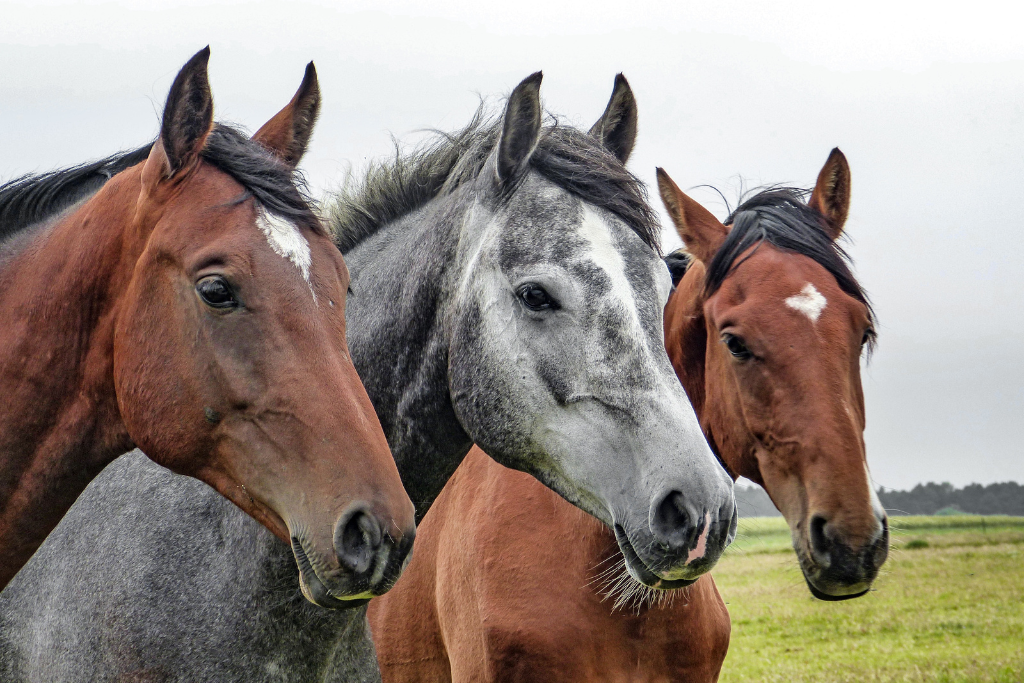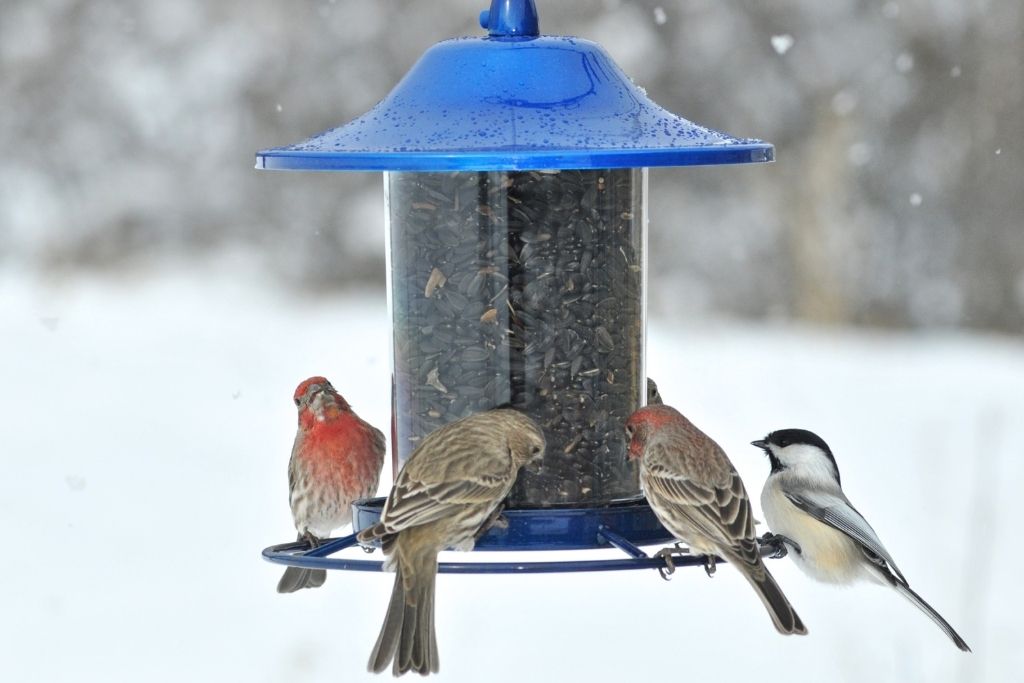Keep Feeding Areas Clean and Maintained
It is important to keep bird feeders clean and maintained. In the Atlantic provinces, a parasite called Trichomonas Gallinae can infect birds, especially purple and gold finches. Bird droppings and other contaminants may also spread infectious bird diseases. A dirty feeder can harbor bacteria, mold, and other disease agents that can quickly contaminate hungry birds and spread to other wild populations. Fortunately, it is easy to clean bird feeders to ensure birds enjoy safe, clean feeding stations.
Clean your feeders about once every week or two, more often during times of heavy use, wet weather, if there have been reports of salmonella in your area, or you notice sick birds in your yard.
Cleaning Bird Feeders
Clean feeders attract more wild birds as fresh, clean seed is more appealing. For the cleanest, healthiest, and most attractive feeders:
- Choose easy-to-clean feeders. Feeders made of plastic, metal, glazed ceramic, and glass feeders are best. Wooden feeders can absorb oils and other remains, making them much more difficult to clean over time. However, if choosing a wood feeder look for cedar constructions.
- Clean regularly. All feeders should be thoroughly cleaned at least once per month. Busier feeders should be cleaned much more frequently. Hummingbird and oriole feeders should be cleaned each time they are refilled.
- Use proper cleaning solutions. Feeders can be sanitized with a solution of one part bleach to nine parts hot water. A mild solution of unscented dish soap is also effective to clean less popular bird feeders.
Steps for Cleaning Bird Feeders
- Soak feeders first. Submerge feeders in a utility sink, large basin, or bucket full of proper cleaning solutions. By soaking a dirty feeder debris is loosened making it easier to scrub clean.
- Clean all feeder parts thoroughly. For the best sanitation each feeder should be cleaned inside and out. This includes cleaning all feeding ports, perches, lids, platforms, reservoirs, and any other part where birds may perch or where feces may collect.
- Use proper equipment. Wear rubber gloves to avoid any contamination. Use stiff brushes to ensure thorough cleaning. Feeds’n Needs sell specialized brushes specifically designed for feeders, though a regular bottle brush can also be effective. An old toothbrush is also a great option for reaching smaller parts, feeding ports, and tight corners. And a stiff pipe cleaner is ideal for pulling through small holes.
- Rinse thoroughly. Submerge cleaned feeders in clean water for several seconds and then rinse to be sure all chemical residue is removed. Inspect to ensure there is no debris remaining.
- Dry feeder completely before refilling. Remaining moisture can lead to mold and mildew that can cause illness and spoiled seed.
- Sanitize all tools and equipment after cleaning feeders. Before putting tools and equipment away, clean them thoroughly and let them dry completely.
Clean Around Feeding Areas
It is essential to clean all nearby feeding areas where birds perch and congregate.
- Clear away old seed and hulls from beneath feeders.
- Remove any rotten or fallen fruit from trees and bushes where birds feed.
- Add mulch or gravel beneath feeders to cover bird droppings.
- Keep birdbaths and other perches clean.
Maintaining Feeders During Poor Weather Conditions
Despite taking necessary steps to protect feeders, they can still accumulate snow and ice in the worst weather. This also happens to be when birds rely on feeders the most. To maintain winter bird feeders:
- Winter Storms. Clean off feeders after every storm, or during storms, to give birds easy access to food. Check all feeding ports are clear and that seed can flow freely. Inspect and repair any damages and ensure they feeders are still fastened securely.
- Keep Feeders Full. Refill feeders frequently with the best winter foods that are higher in fat and calories creating a healthy and trusted food source for hungry birds.
- Keep Feeding Areas Accessible. Remove snow in ground-feeding areas to allow ground-dwellers like juncos and doves easy access to food.
Related Articles
Winter Backyard Bird Enthusiasts
Feeding Wild Birds in Winter
Best Winter Bird Feeders
Best Winter Bird Seed
How To Properly Store Bird Seed
Keep Backyard Birds Healthy in Winter

